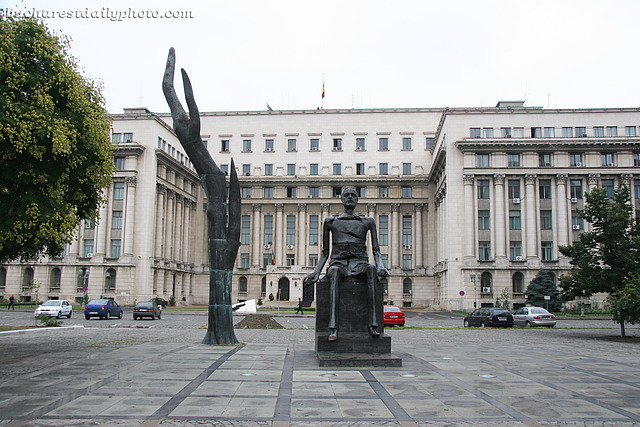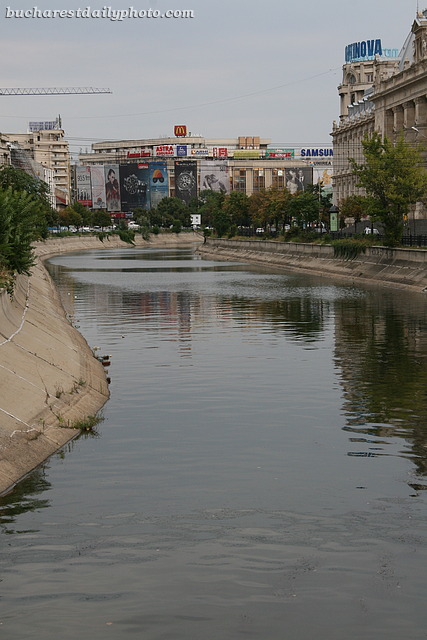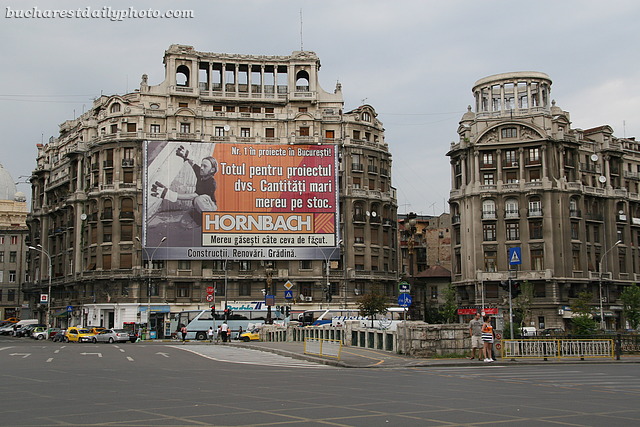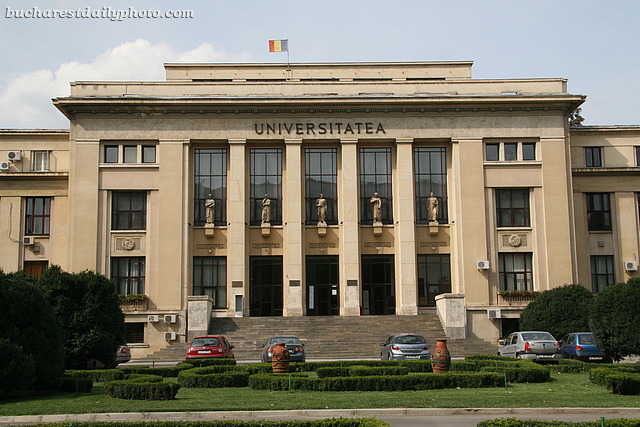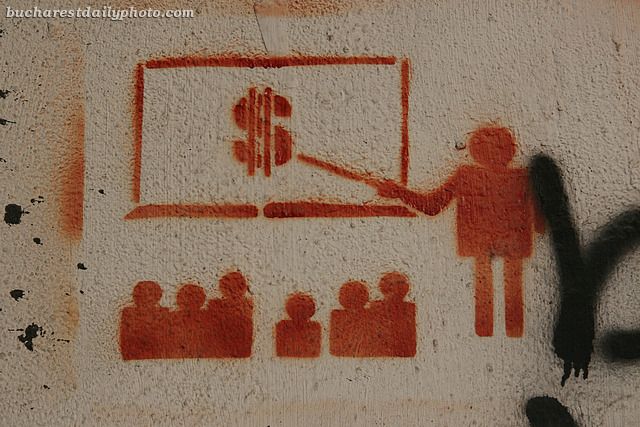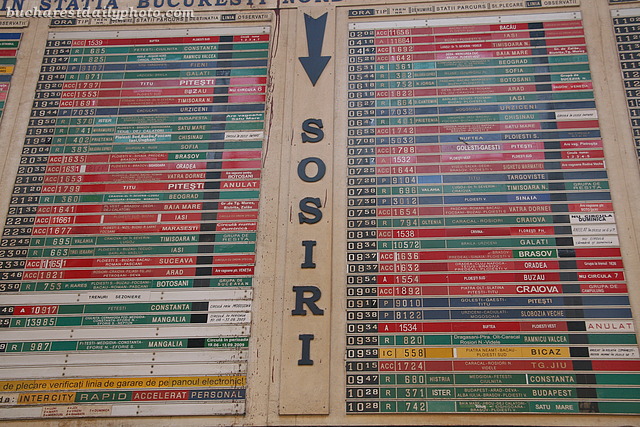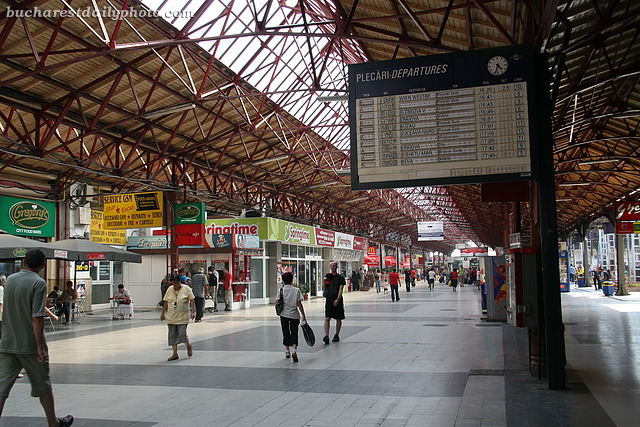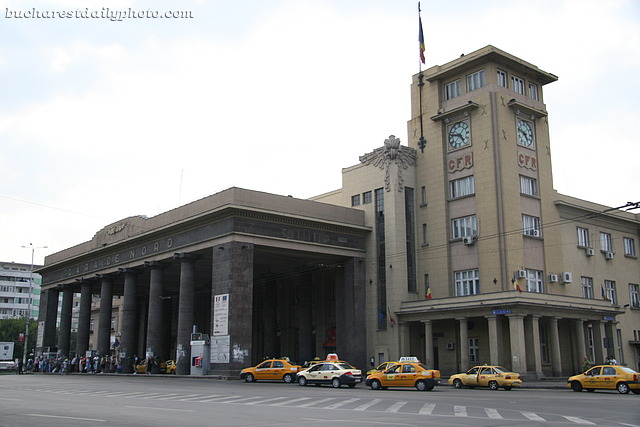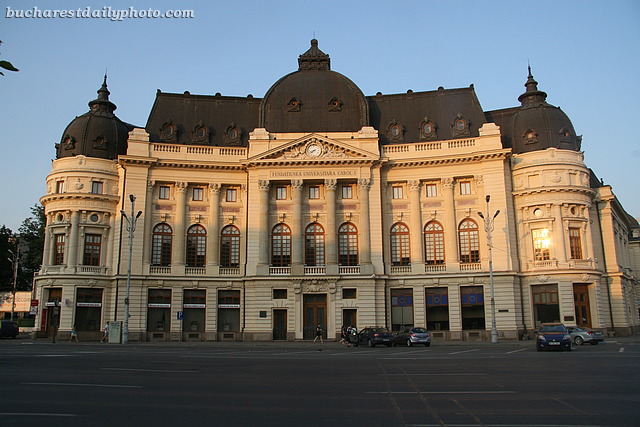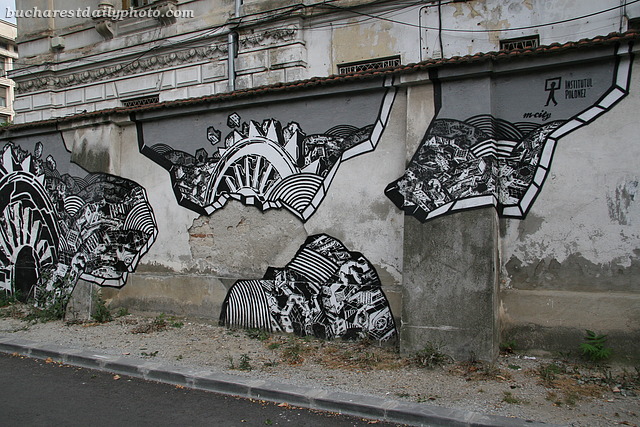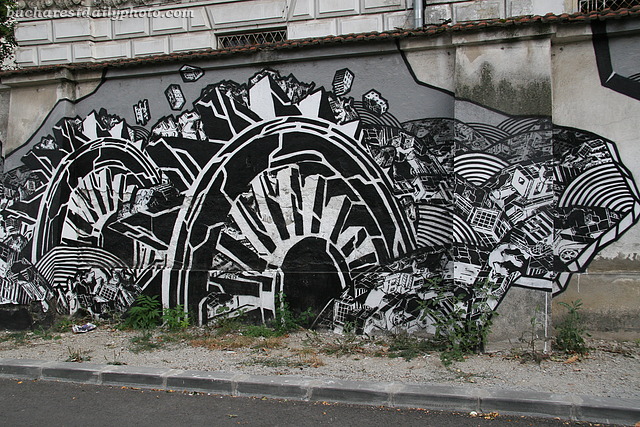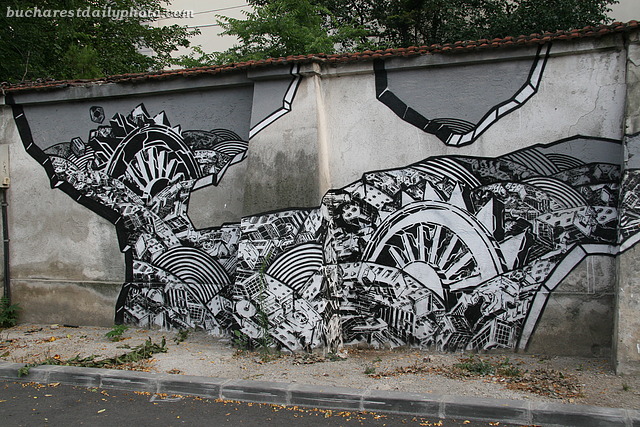Today is another crazy day when I’ll be traveling for 20 hours and I won’t have time for a lengthy post. But I didn’t want to miss the day so I decided to post a photo on a subject that I’ve already written about, just shot from another angle. This was one of my first posts so some of you might have missed it. Today’s subject is the Iuliu Maniu statue in Revolution Square and you’ll find the initial photo here.
Paris has Seine, London has Thames and Bucharest has … Dâmboviţa. I live very close to its banks so I get to see it every day. I was actually surprised to see that Dâmboviţa has a dedicated, very nicely done, wikipedia page. To summarize the information that I read, the citizens of Bucharest used to drink water from Dâmboviţa but they don’t anymore because nowadays it’s very polluted due to the raw sewage that’s being dumped into it. Also, Dâmboviţa used to flood Bucharest quite often but it doesn’t anymore because it was channeled in 1970s (the second attempt, the first being done in 1883). It was never used for navigation.
Petre Antonescu, the architect who designed the Faculty of Law Building, the subject of yesterday’s photo, also designed these two elegant buildings located at the south end of Victory Road in United Nations Square. They were built between 1928-1930 and served as headquarters for two insurance companies, Adriatica and Agricola Fonciera. Even though the buildings are in need of renovation I think that you can clearly tell that they are real beauties. What sets these apart from other similar structures of that time is the ingenious tops of the buildings.
I don’t even want to get started on the ad because I hope to write a post about these massive pieces of advertising that are plaguing Bucharest. I mean, really, don’t we have enough buildings in Bucharest to display these on, do we have to put them on historical buildings?
This serious looking building is Bucharest’s Law Faculty which is part of the University of Bucharest. It was designed by architect Petre Antonescu in neoclassical style and was finished in 1935. On the facade are the statues of five great lawmakers, lawyers and jurists of the ancient times: Lycurgus of Sparta, Solon, Cicero, Papinian and Justinian. The statues are the work of sculptors Ion Jalea and Costin Georgescu. Romania’s Civil Code is based on the Napoleonic Code (the French Civil Code) established under Napoléon I in 1804, which was adopted by Romania in 1864 (with some modifications) and is still in use.
Sorry for the late posting. I was busy debating the values of capitalism with my friends (you know who you are). That’s because of the new Michael Moore movie, “Capitalism, a love story”, which none of us has seen yet, but about which we read in the press to be a critical look at the American capitalism as it’s practiced today. As people who lived in both communism and capitalist societies we have our own (strong) opinions regarding this subject, and the discussion went on and on … And since we’re talking about values, I found this simple graffiti in an entrance to the inner garden of bloc Dunărea, at University Square, across from the graffiti of the jester which I already posted. I am curious what is your opinion about the message of the graffiti. My interpretation of it is that we should be careful about the values we teach to our children. We live in a material world, to quote Madonna, but that is of our own creation. What do you think? Or maybe I’m just reading too much into it and the graffiti it’s just showing a guy giving a presentation on the financial crisis 🙂
One more picture from the Northern Train Station and I promise to move on 🙂 This colorful panels show a part of the train schedule for this year. To the left we have departures and to the right we have arrivals. “Sosiri” stands for “Arrivals”. The colors indicate the types of trains. We have 4 types of trains in Romania: “Personal” (blue coded) a sort of commuter train that stops in all stations, therefore it is very slow, “Accelerat” (red coded) a bit faster than “personal” trains and with fewer stops, “Rapid” (green coded) a fast train which stops only in major cities and “Intercity” (yellow coded) also a fast train with stops only in major cities.
Today’s picture is also showing the Northern Train Station and I thought I’ll write a few more words about it. To be honest it’s hard for me to appreciate this railway station at its true value. As train stations go, in my travels I’ve seen better and I’ve seen worse. I never felt unsafe here but then I’m Romanian and I speak the language, which helps through all the hassles. It’s not a pretty train station but I believe that it improved a lot in the last ten years. It’s cleaner and it has more facilities but there’s definitely room for improvement. For some reason it feels like an old fashioned railway station rather than a modern one. There are lots of stands and kiosks, selling newspapers, food and drinks as people like to stock up before they board. There are also some fast food places including a Mickey D which is “the place” to go to the bathroom 🙂 so much so that at some point you needed a code to open the door to the bathroom, code which was given to you when you bought something. I don’t know if it helped much because, of course, many people would hold the door open for you. Until some time ago they had this system where, unless you had a valid ticket, you had to pay to enter the train station. It wasn’t much, just a few cents, but it was a hassle if you didn’t have the right change. They did it so they can screen out the beggars and the homeless, which somehow found their way in anyway. I think they gave that system up because I didn’t have to pay the last few times I was at the train station.
If you come to Bucharest by train, then most likely this is where your railway journey ends and your exploration of the city starts. The Northern Train Station (Gara de Nord in Romanian) is the main train station in Bucharest. It receives both national and international traffic with daily trains to Budapest, Vienna, Sofia, Bratislava, Chişinău, Belgrad, Prague, Venice etc. It was originally called Gara Târgoviştei after an adjacent road formerly called “Târgovişte Road” (Calea Târgoviştei in Romanian), Calea Griviţei today. The Northern Train Station opened to public in 1872.
In order to prolong the anniversary a little longer I decided that today I’ll post another postcard picture. This is the Central University Library (“Biblioteca Centrală Universitară” in Romanian), a beautifully ornate building located opposite the Royal Palace in the Revolution Square. The building was designed by the French architect Paul Gottereau who also designed the Royal Palace and the CEC Building (I have yet to post of picture of it). Construction was started in 1890 and the building was inaugurated in 1895 as the “Palace of Carol I University Foundation” being build on land bought by Carol I of Romania for the foundation that carried his name. In 1948 The Library of the University Foundation becomes The Central University Library, a state owned institution. The building was heavily damaged during the December 1989 Revolution when over 500000 books were lost in a fire. It was later restored and it opened again in 2001.
M-City is an very detailed stencil series created by the Polish artist Mariusz Waras. The main subject of his murals is the city landscape. His works can be seen in many cities including Warsaw, Berlin, Paris, Budapest, Rio de Janeiro, London, Prague and, as you probably already guessed, Bucharest. Waras was invited to Bucharest by the Polish Cultural Center for the “Night of the Cultural Centers”. On this occasion he made two murals, one at the Polish Center (which I didn’t see yet) and the one in today’s photo at the Writer’s Union on Calea Victoriei. His murals are formed from about 100 individual components, representing buildings, infrastructure elements, people etc. which are always placed in a different combination creating a unique mural. You can find more about m-city here. I can’t say exactly why but I didn’t take a picture of the whole ensemble. Instead I took three pictures that put together create the whole graffiti. I guess that’s how inspiration guided me at that moment 🙂 That’s why I decided to post all three pictures, to give you a clearer idea of the entire work.
